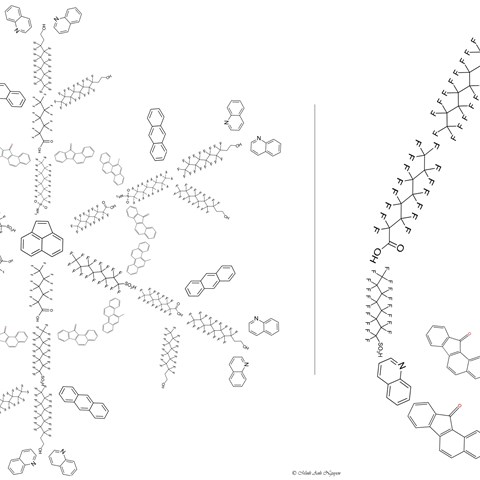Facts:
The thesis "Legacy and emerging pollutants in pristine and polluted boreal catchments" will be defended Friday 20th October 2017 at 09:00; Loftets Hörsal, SLU Ultuna, Uppsala

Minh Anh Nguyen has studied per- and polyfluoroalkyl substances (PFASs) and polycyclic aromatic compounds (PACs), which are new types of persistent organic pollutants (POPs) in the environment. He found that the rivers with higher concentrations of PFAS had similar types of PFAS contaminants, suggesting an impact of a similar kind of point source in these rivers, such as fire-fighting training areas and wastewater treatment plants. The PAC studies focused on diffuse sources, from atmospheric deposition, and its distribution between land and water in a pristine study area, compared to densely populated areas. Leakage of PAC from soil to water differed with landscape type and showed seasonal variations, and densely populated areas affected the levels of PAC to a greater extent than pristine forest areas.
PFAS and PAC are currently of great concern due to their potential toxicity and high mobility in soil and water. PFAS are artificial chemicals with unique properties used in industry and consumer articles such as fire-fighting foam, water repellent coating materials and food packaging materials. PAC can be formed naturally (eg in coal and crude oil), be produced unintentionally during incomplete combustion of organic materials (eg fossil fuels and garbage) or intentionally produced for industrial use. The overall objective of the thesis was to improve our understanding of the transport and fate of these pollutants in pristine and polluted boreal catchments.
The thesis "Legacy and emerging pollutants in pristine and polluted boreal catchments" will be defended Friday 20th October 2017 at 09:00; Loftets Hörsal, SLU Ultuna, Uppsala
Minh Anh Nguyen, Doctoral Studen
Department of Aquatic Sciences and Assessment, Section for Organic Environmental Chemistry and Ecotoxicology, SLU
anh.minh.nguyen@slu.se, +46 (0) 18-673045